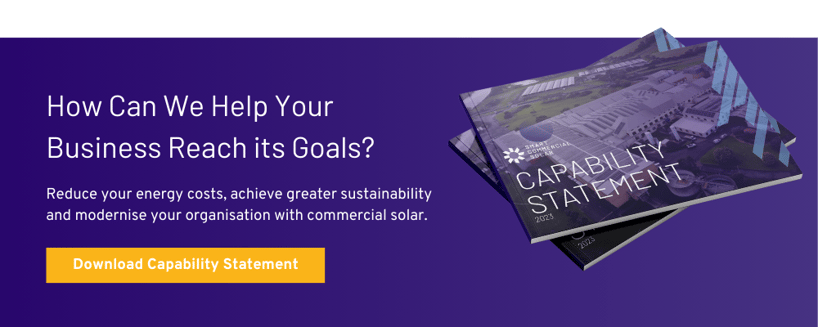In recent years, terms like "Net Zero," "Corporate Social Responsibility," and "Decarbonisation" have gained significant traction as customers demand responsible practices from businesses they support.
There is a common misconception that the road to becoming a net-zero company is expensive and difficult, but in reality, it’s a good business decision that many companies are implementing because it benefits the bottom line - as well as the environment.
This Smart Guide, a collaborative effort with our friends at Energy Action, aims to break down the jargon, demystify key concepts and identify the barriers you may face on your journey to Net Zero.
Understanding Net Zero
Net Zero is a target of balancing greenhouse gas emissions produced with greenhouse gases removed from the atmosphere. Net-zero energy can be achieved by measuring emissions, lowering usage, procuring energy from renewable sources and continuous monitoring.
Achieving this balance ensures that every emission produced is effectively offset, resulting in a neutral impact on the environment. More than just a buzzword, the concept of net zero represents a profound shift in our collective consciousness, propelling us towards a future where climate finance goes beyond the value chain.
Other terms you may come across in this space include:
- Carbon neutrality: carbon dioxide emissions generated but then offset elsewhere to achieve a net-neutral outcome.
- Zero emissions: a more ambitious way to achieve net-zero emissions, removing the “net” part and not emitting carbon at all.
- Carbon negative or climate positive: when you remove more emissions from the atmosphere than you emit.

The Standard of Net Zero for Companies
To be recognised as a 'net-zero business' acting in line with climate science, businesses must now at least halve their emissions by 2030, and reduce them by 90% by 2050 at the latest, all without the use of carbon offsetting.
Given that businesses, if all their environmental impacts are considered, account for an estimated 80 to 85% of global emissions, the adoption of a common, science-based approach is vital if we are to limit global warming to 1.5°C above pre-industrial levels.
The Renewable Energy Target is an Australian Government scheme designed to reduce emissions of greenhouse gases in the electricity sector and encourage the additional generation of electricity from sustainable and renewable sources, such as solar power. It operates through the creation of tradable certificates.
Overcoming Barriers
There’s no doubt that barriers exist which hinder businesses from achieving net-zero status. One of the biggest sources of emissions is electricity and heat production, so addressing this in a cost-effective way is often the first step for Australian organisations.
To optimise your net zero journey, you’ll need to think about;
- Upfront investment costs and ROI uncertainty: Mitigate concerns by conducting thorough financial analyses, exploring available incentives, and evaluating long-term returns on investment. For solar and storage, consider options like Power Purchase Agreements (PPAs), which allow businesses to install a solar PV system without upfront costs, as the system is owned and operated by a third-party provider. This solution provides a predictable pricing structure and reduces ROI uncertainty.
- Lack of awareness and expertise: Simplify the sustainability journey by emphasising the importance of taking the first step. Seek guidance from sustainability experts or engage with organisations specialising in sustainable practices to gain valuable insights and expertise. That's where something like Energy Action’s Utilibox can prove invaluable. This innovative energy management tool provides free energy emissions benchmarks with personalised and cost-effective energy reduction insights.
- Resistant Mindset: Embrace change by fostering a culture of sustainability within your organisation. Communicate the benefits of net zero, engage employees at all levels, and empower them to contribute to the transition. Educate your workforce on the positive impact of renewable energy, such as cost savings, environmental benefits, and enhanced brand reputation, to generate buy-in and enthusiasm for the net-zero journey.
- Lack of Support from Supply Chain Partners: Foster partnerships with suppliers who share your commitment to sustainability. By collaborating on sustainable practices, you can collectively reduce emissions and enhance supply chain resilience. Encourage your supply chain partners to adopt renewable energy solutions like commercial solar PV, fostering a shared commitment to net zero and driving positive change throughout the value chain.
Becoming a net-zero business is an essential commitment to building a sustainable future. Remember, even small actions have the power to create a significant impact, so take the first step today and pave the way towards a greener and more responsible tomorrow. For more information on how commercial solar can help you address scope 1 emissions, get in touch with our sales team today.




